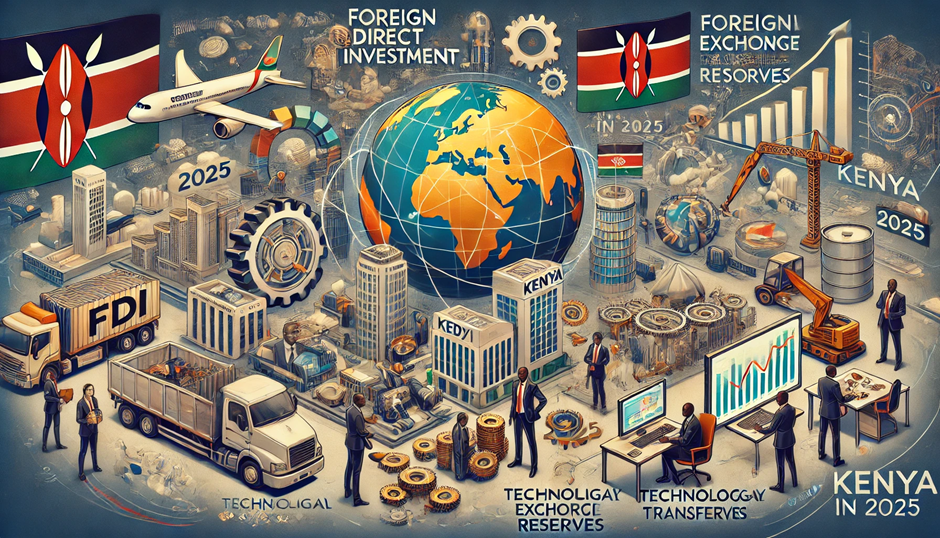
Eid ul-Fitr 2025 in Kenya: Traditions, History, and Modern Celebrations

Source: Travel and Tour World
Eid ul-Fitr, also known as the “Festival of Breaking the Fast,” is one of the most significant celebrations in the Islamic calendar. Marking the end of Ramadan, this joyous occasion is observed with prayers, feasts, and acts of charity. In Kenya, Eid ul-Fitr will be celebrated on Monday, March 31, 2025, aligning with the 1st of Shawwal 1446 AH. However, the exact date may vary based on the sighting of the moon. The festival is a time of unity, cultural expression, and devotion, celebrated across the country by the Muslim community, particularly in regions like Mombasa, Nairobi, and Lamu.
The Historical Significance of Eid ul-Fitr

Source: The Independent
The Origins of Eid ul-Fitr
Eid ul-Fitr dates back to the time of Prophet Muhammad (PBUH), who established it as a day of gratitude and communal harmony. It is a reward for Muslims after a month of fasting, prayer, and self-discipline during Ramadan.
Islam’s Presence in Kenya
Islam was introduced to Kenya through Arab traders along the Swahili coast in the 8th century. Over time, it became deeply rooted in coastal regions and spread across the country. Eid ul-Fitr has since been a key part of the nation’s cultural and religious fabric.
Traditional Eid ul-Fitr Celebrations in Kenya
Pre-Eid Preparations
Kenyan Muslims prepare for Eid ul-Fitr by engaging in the following activities:
- Moon Sighting: The announcement of Eid depends on the sighting of the new moon.
- Zakat al-Fitr: A mandatory charitable donation given to the needy before the Eid prayer.
- Home Decoration & Shopping: Families buy new clothes and decorate their homes to mark the festive occasion.
The Day of Eid
Eid Prayers

Source: Shafaqna
On the morning of Eid, Muslims gather in mosques or open prayer grounds for communal prayers, known as Salat al-Eid. Major prayer venues include:
- Jamia Mosque in Nairobi
- Lamu’s Riyadha Mosque
- Masjid Musa in Mombasa
Feasting and Festivities

Source: Onmanorama
After prayers, families and friends come together to share meals. Popular dishes include:
- Pilau and Biryani: Spiced rice dishes enjoyed with meat and vegetables.
- Mahamri: Fried bread often served with chai.
- Samosas and Mishkaki: Common street foods during Eid celebrations.
Visiting Relatives and Community Gatherings

Source: Vecteezy
Families exchange greetings of “Eid Mubarak” and visit each other’s homes. Acts of kindness, such as distributing food to the less fortunate, reinforce the community spirit.
Modern Eid ul-Fitr Celebrations in Kenya (2025)
Influence of Technology
With digital advancements, Kenyan Muslims now send Eid greetings via WhatsApp, social media, and video calls. Online banking and mobile money platforms like M-Pesa make Zakat contributions more convenient.
Public Events and Social Gatherings
- Eid Festivals: Cities like Nairobi and Mombasa host public Eid celebrations featuring cultural performances, bazaars, and funfair rides.
- Media Coverage: National TV stations and YouTube channels stream live Eid prayers and cultural documentaries.
Fashion Trends

Source: OkayAfrica
Kenyan Muslims embrace a mix of traditional and modern attire during Eid. While men wear kanzus (long robes) with embroidered caps, women opt for elegant abayas, often accessorized with henna.
The Significance of Eid ul-Fitr in Kenyan Society
Promotion of Peace and Unity
Eid ul-Fitr fosters interfaith harmony, with non-Muslims also participating in celebrations and sending well wishes.
Economic Boost
Markets experience increased sales as people shop for clothes, food, and gifts. Restaurants and tourist destinations also record high patronage.
Charity and Social Welfare
Muslim organizations distribute food packs and provide financial aid to vulnerable communities, reinforcing the essence of giving.
Conclusion
Eid ul-Fitr in Kenya is a blend of religious devotion, cultural traditions, and modern influences. While maintaining its deep historical roots, the celebration continues to evolve with changing times. As Kenyan Muslims prepare to celebrate Eid ul-Fitr on March 31, 2025, the essence of unity, charity, and gratitude remains at the heart of the festivities.
References
Islamic Foundation Kenya – https://www.islamkenya.org
Jamia Mosque Nairobi – https://www.jamiamosque.or.ke
National Museums of Kenya – https://www.museums.or.ke
Time and Date Kenya – https://www.timeanddate.com/holidays/kenya/eid-al-fitr








